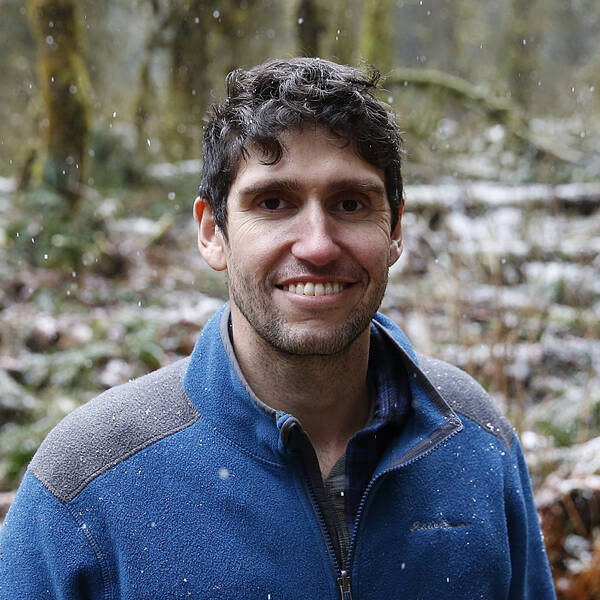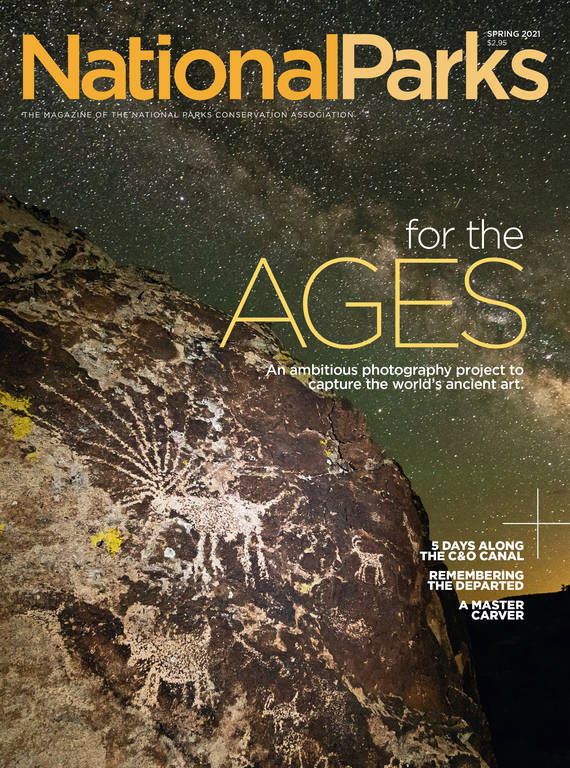Spring 2021
Pines in Peril
Grand Teton’s lodgepole forests are exquisitely adapted to wildfire — but can they survive a changing climate?
In 1988, a fire ecologist named Monica Turner clambered into a helicopter and soared over Yellowstone National Park’s still-smoldering forests. One fire after another had torched the park that infamous summer, ultimately burning some 800,000 acres, and Turner expected devastation. Instead she beheld a green-and-black quilt, burned forests and living ones mingled across the landscape. A year later, lodgepole pine seedlings carpeted the ground so densely that, she said, “you couldn’t put your foot down without squashing a whole bunch of them.” The Greater Yellowstone Ecosystem’s forests, she realized, were more resilient than anyone had imagined.
That resilience is a tribute to the evolutionary history of the lodgepole pine, a tree whose relationship to wildfire runs deep. The species’ ramrod trunks and slender crowns blanket much of the Mountain West, including Yellowstone and nearby Grand Teton National Park. The pine achieved its dominance through a crafty trick. Many lodgepole pines produce serotinous cones — cones whose scales remain glued shut by resin, sometimes for decades, until the heat of a wildfire opens the cones, melts their seal and releases their seeds into newly fertile, sunlit soil.
A Fiery Year
“Fire is a wild force of nature that we think of as part of our ecosystem,” said Diane Abendroth, fire ecologist at Grand Teton. The park’s lodgepole forests, she added, have been sculpted by fire “for as long as they’ve been in existence.”
Today, though, the longstanding fire patterns that gave rise to lodgepole pines are shifting. A growing body of research suggests that larger and more frequent fires, fueled by climate change, will test lodgepole forests’ ability to regenerate — leading to dramatic changes in some of the country’s most iconic national parks. “We don’t know exactly what, or exactly how,” said Nathan Gill, an ecologist at Texas Tech University. “But there will certainly be flux in the composition of the forest.”
That’s the lesson from a recent study set in the footprint of the Berry Fire, which burned over 20,000 acres in 2016. The largest conflagration in Grand Teton’s history, it was unusual both in its intensity and its timing. While the park’s lodgepole forests have historically gone a century or more between large blazes, the Berry Fire overran some stands that had burned less than 20 years earlier. Such short fire intervals could spell trouble for lodgepole pines, which can take decades to produce a sufficient supply of serotinous cones. “If fires come before the trees produce cones, we don’t have a local seed source,” said Turner, now a professor at the University of Wisconsin.
Fortunately, lodgepole pines have another trick up their needle-draped sleeves. Long before they’re ready to produce serotinous cones, the young pines start cranking out nonserotinous cones, whose seeds are borne away by the breeze, no fire needed. In 2018, Gill, Turner and their colleague Tyler Hoecker decided to investigate the fate of these windblown seeds. Theirs was a simple but important question: If young lodgepole forests burned before producing enough serotinous cones, could nearby trees compensate by supplying windblown seeds?
To collect pine seeds, the team placed a series of trays in and around the recently burned forest. Some trays they put near lodgepole pines that had sprouted just 18 years prior. Some they put by 30-year-old stands — trees a bit closer to middle age. And still others they left near old giants, pines that had towered over the park for more than 100 years. Then they let their trays sit for a summer, slowly gathering seeds deposited by the swirling Wyoming winds.
When, that October, Gill and Hoecker came back to collect the trays, they found more or less what you’d expect. Burned areas near the youngest stands had collected few seeds, because their trees hadn’t had time to produce many cones. The middle-aged stands had more cones but weren’t quite tall enough to broadcast their seeds long distances. Only the oldest, tallest trees were capable of scattering seeds far and wide across the singed landscape. You might liken it to throwing a paper airplane off a skyscraper: The higher your launch point, the more opportunity the wind has to carry your craft.

National Parks
You can read this and other stories about history, nature, culture, art, conservation, travel, science and more in National Parks magazine. Your tax-deductible membership donation of $25 or more entitles…
See more ›The researchers’ intuitive discovery comes with alarming implications. As infernos like the Berry Fire become more frequent, fewer old lodgepole pines will grace Grand Teton. Fewer old trees means less seed dispersal. And less seed dispersal means that lodgepole forests will be slower to regenerate in burned areas — or in some cases may not regenerate at all.
The lesson: Resilience has its limits. Lodgepole forests thrive in the wake of sporadic fires, but not when they burn every few years. Unfortunately, the Greater Yellowstone Ecosystem is experiencing more frequent fires. According to recent climate modeling, Turner said, the region stands to lose around one-third of its conifer forests by 2100 even if greenhouse gas emissions level off by mid-century. If we continue to burn fossil fuels unabated, the landscape could be transformed into something very different than what we see today.
What exactly will succeed lodgepole pine, the charismatic megaflora that has long defined Yellowstone and Grand Teton? In some places it may be aspen; in others, Douglas fir; in still others, shrub habitat. But while Turner isn’t rosy about lodgepole pines’ future, she learned in 1988 never to count the species out. National parks, she said, “are still the best places to understand how well nature can adapt to these changes.”
About the author
-
 Ben Goldfarb Author
Ben Goldfarb AuthorBen Goldfarb is the author of "Crossings: How Road Ecology is Shaping the Future of Our Planet" and “Eager: The Surprising, Secret Life of Beavers and Why They Matter.”



